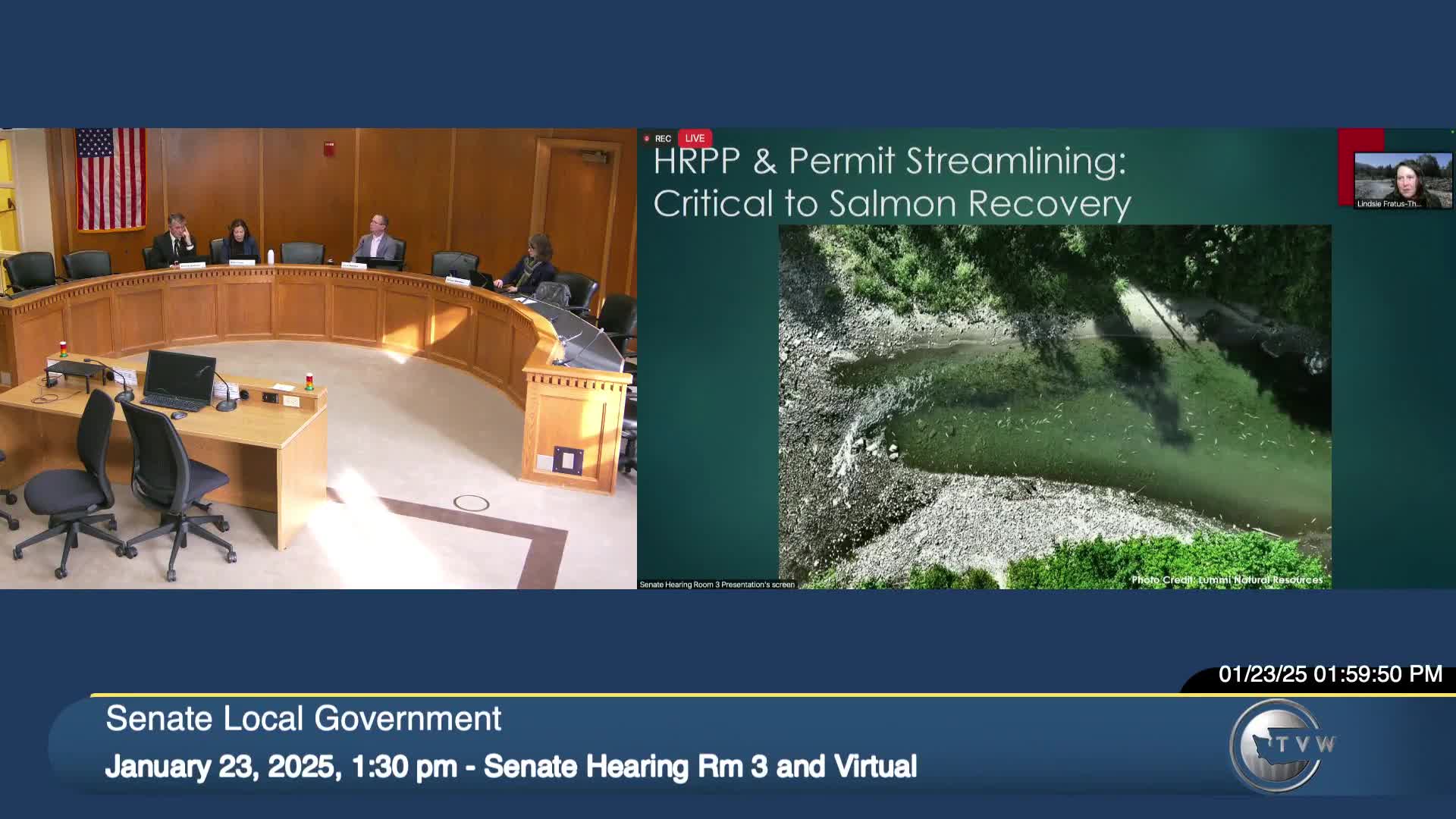Lummi Nation and Tribes Push for Streamlined Salmon Recovery Permits Amid Crisis
January 23, 2025 | Local Government, Land Use & Tribal Affairs, Senate, Legislative Sessions, Washington
This article was created by AI summarizing key points discussed. AI makes mistakes, so for full details and context, please refer to the video of the full meeting. Please report any errors so we can fix them. Report an error »

The Senate Local Government Committee convened on January 23, 2025, to discuss critical habitat restoration initiatives and legislative measures aimed at streamlining environmental permitting processes for salmon recovery projects. The meeting highlighted the urgent need for effective regulatory frameworks to address ongoing ecological crises, particularly concerning Chinook salmon populations.
The session began with a presentation emphasizing the alignment of proposed regulations with habitat protection and restoration goals. A representative detailed the dire situation in the South Fork Nook Sac, where high temperatures and low water flows have led to significant Chinook mortality, with over 2,400 fish dying before spawning in the summer of 2021. In response to this crisis, the Lummi Nation declared an emergency, underscoring the urgency of the matter.
The discussion transitioned to the Habitat Recovery Pilot Program (HRPP), which aims to alleviate burdensome regulatory processes that hinder restoration projects. The program has reportedly reduced permitting delays and costs, allowing project sponsors to focus on higher-priority tasks. The committee acknowledged the importance of extending this program to enhance the efficiency of restoration efforts.
Following this, Paul Culp from the Lower Columbia Estuary Partnership provided testimony on the organization's habitat restoration initiatives. He highlighted the significant economic and ecological benefits of their projects, including a $24 million reconnection project on the East Fork Lewis River, which is expected to create over 300 local jobs and generate up to $65 million for Clark County. Culp noted that the HRPP has saved substantial costs in permitting fees and staff time, facilitating timely project execution.
The meeting concluded with a briefing on Senate Bill 5155, which seeks to rename the HRPP as the Habitat Restoration Permit Pathway Program and remove its expiration date. The bill aims to expand the scope of projects eligible for streamlined permitting, including those under the Clean Water Act and the Washington Wildlife and Recreation Program. The committee discussed the requirement for project applicants to provide detailed descriptions of their projects to relevant authorities, ensuring thorough oversight.
Overall, the meeting underscored the critical need for efficient regulatory processes to support habitat restoration efforts and address the ongoing challenges faced by salmon populations in Washington. The committee's discussions and proposed legislative actions reflect a commitment to enhancing ecological resilience and supporting local economies through effective environmental management.
The session began with a presentation emphasizing the alignment of proposed regulations with habitat protection and restoration goals. A representative detailed the dire situation in the South Fork Nook Sac, where high temperatures and low water flows have led to significant Chinook mortality, with over 2,400 fish dying before spawning in the summer of 2021. In response to this crisis, the Lummi Nation declared an emergency, underscoring the urgency of the matter.
The discussion transitioned to the Habitat Recovery Pilot Program (HRPP), which aims to alleviate burdensome regulatory processes that hinder restoration projects. The program has reportedly reduced permitting delays and costs, allowing project sponsors to focus on higher-priority tasks. The committee acknowledged the importance of extending this program to enhance the efficiency of restoration efforts.
Following this, Paul Culp from the Lower Columbia Estuary Partnership provided testimony on the organization's habitat restoration initiatives. He highlighted the significant economic and ecological benefits of their projects, including a $24 million reconnection project on the East Fork Lewis River, which is expected to create over 300 local jobs and generate up to $65 million for Clark County. Culp noted that the HRPP has saved substantial costs in permitting fees and staff time, facilitating timely project execution.
The meeting concluded with a briefing on Senate Bill 5155, which seeks to rename the HRPP as the Habitat Restoration Permit Pathway Program and remove its expiration date. The bill aims to expand the scope of projects eligible for streamlined permitting, including those under the Clean Water Act and the Washington Wildlife and Recreation Program. The committee discussed the requirement for project applicants to provide detailed descriptions of their projects to relevant authorities, ensuring thorough oversight.
Overall, the meeting underscored the critical need for efficient regulatory processes to support habitat restoration efforts and address the ongoing challenges faced by salmon populations in Washington. The committee's discussions and proposed legislative actions reflect a commitment to enhancing ecological resilience and supporting local economies through effective environmental management.
View full meeting
This article is based on a recent meeting—watch the full video and explore the complete transcript for deeper insights into the discussion.
View full meeting
